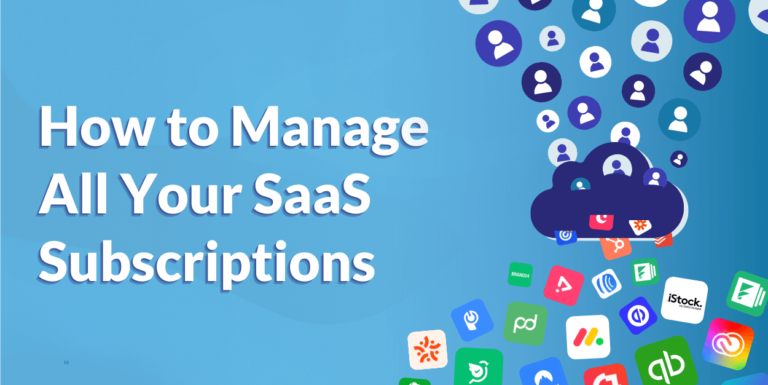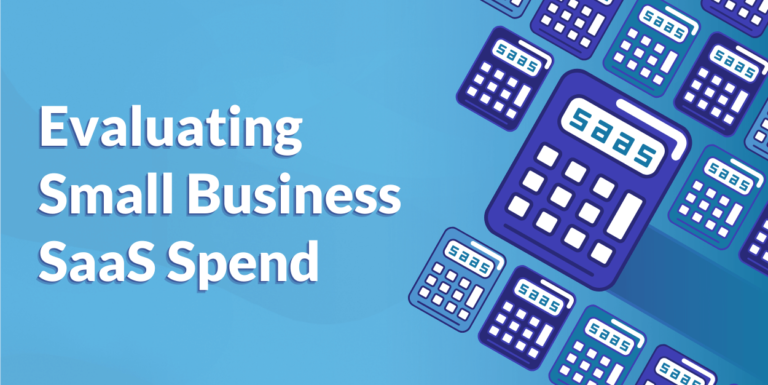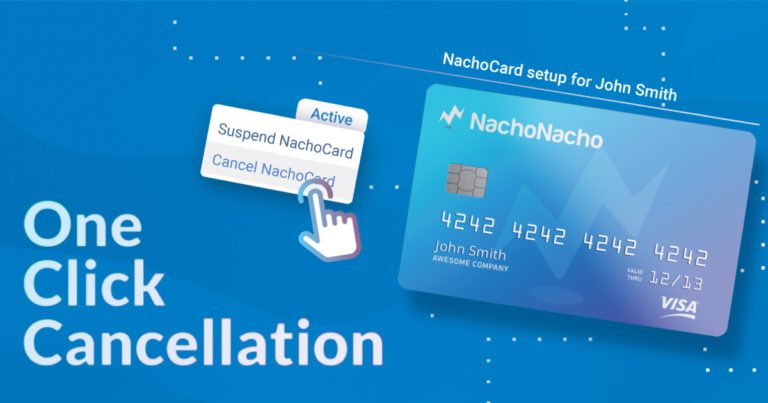Do You Need a SaaS Manager?
There’s a new role emerging in the IT departments across business functions – the SaaS manager. As companies invest in Software as a Service to promote business expansion, business leaders are quickly realizing that, in some cases, SaaS requires a different management strategy than traditional software.
Consider how many SaaS applications your business uses on a daily basis. They are likely pivotal to the functionality and productivity of your workflow. With so many applications and functions in use, you’ll likely want to invest in a SaaS management platform like NachoNacho or create a position like a SaaS manager in order to keep track of all your tools.
Which management strategy is right for you? Read on to find out.
The Rise of SaaS and How it Can Help Your Business
SaaS is a relatively new tool to be widely used by so many businesses – but one that’s caught on quite rapidly. According to a 2020 report by Bessemer Venture Partners, the market capitalization of the public cloud reached $1 trillion that year compared to less than $40 billion only a decade ago.
The COVID-19 pandemic only highlighted the benefits of using SaaS for businesses, and as a result, the industry saw a period of significant growth. In fact, Zylo saw an increase of 26% in SaaS spending that year – and there’s no sign of that growth slowing down any time soon. Gartner predicts that end-user spending on SaaS spending will reach $482 billion in 2022 as more and more companies come to see the value in SaaS investment.
The transition to SaaS for businesses has created new paths to productivity, cost-savings, and scalability. Whether it functions in collaboration, project management, sales, marketing, or another business need you may have, the reduced capital expenditures and simplified employee collaboration and deployment of tools have reconfigured the workplace for the better. Here are some examples of SaaS applications broken down by function that can simplify your daily tasks.
Collaboration – Favro
Favro is an all-in-one cloud platform for teams to perform collaborative writing, planning, and project and organizational work. Its digital office space helps to empower businesses by allowing them to work autonomously in an organized fashion. By giving managers the ability to monitor projects and measure OKRs, this application works as a source of transparency and accountability. Teams and leaders can see project and task overviews that help drive data-driven decisions.
Get 30% CASHBACK on all Favro plans with NachoNacho in your 1st year.
Project Management – Monday.com
There are plenty of options for the best SaaS for project management, one of which is Monday.com. Monday.com is an application where teams can create and shape workflow apps. With this software, managers are able to easily assign tasks and get notifications on what team members are doing in real-time. Remote-ready templates suitable for any project allow your team to get onboarded to new tasks quickly and painlessly. The best part? Monday.com has plenty of integration options like Zoom, Slack, email, calendar, and much more to keep all of your work in one organized place.
Get 20% CASHBACK on all Monday.com plans with NachoNacho in your 1st year.
Sales & Lead Generation – Autoklose
Autoklose is a sales software that helps you close more deals and save time through automation. With sales engagement and B2B data at your disposal, you can simplify and supercharge your sales process. With this application you can run effective, targeted campaigns using efficient templates and deep customization.
Get 15% CASHBACK on all Autoklose plans with NachoNacho. Forever.
Marketing – EngageBay
Engagebay is an integrated marketing, sales, and service automation platform for small and growing businesses. It offers all of the features you need for your marketing and sales departments on one unified platform, reducing redundancy and increasing productivity. With this software, you can attract the ideal audience to your website by running targeted ads on social channels. The powerful marketing tools help aid engagement to create long-lasting relationships with customers by creating personalized marketing campaigns specific to their purchase behavior.
Get 30% CASHBACK on all EngageBay plans with NachoNacho. Forever.
BPM – Flokzu
Flokzu is a BPM platform you can use to automate any kind of business process easily. A benefit of Flokzu is that anyone in your team can start automating business processes right away because the platform is no-code and uses a drag-and-drop builder to make things as simple as possible.
Save 25% on all Flokzu plans by subscribing through the NachoNacho SaaS marketplace.
Why is SaaS Management Important?
The overall goal of SaaS management is to reduce the risk of unmanaged tools or technology as a way of improving the effectiveness and value of your purchased software. Different roles in the company will benefit from SaaS in different ways. IT leaders, for example, may want SaaS management to keep the order of all of your company’s cloud applications to keep them secure. On the other hand, a CEO may want SaaS management in order to cut costs and create greater profitability for the company. SaaS management helps companies increase productivity and efficiency without sacrificing on costs or data security.
The importance of SaaS management is particularly apparent when one examines the differences between it and traditional software. While on-premise software is generally purchased and managed by IT teams, SaaS is normally purchased throughout the entire business in various departments and multiple employees. It’s often as simple as entering a credit card number – which can lead to duplicate or unnecessary expenses going unnoticed. With vendors like NachoNacho, you can use their virtual credit card to monitor employee SaaS spending and keep costs in check.
In some organizations, SaaS management may be the responsibility of software asset managers, which are teams that are typically focused on the on-premise, IT-purchased software. SaaS management is a different ball game with cloud-based purchases running throughout the entire organization. In other organizations, a person in IT with great leadership qualities may be tasked with the management of purchased SaaS platforms – but this normally requires using complicated and labor-intensive spreadsheets that take up too much time. Worst of all, some organizations don’t manage their SaaS platforms at all, leading to a lack of visibility of SaaS spending and zero insights on how to optimize SaaS purchases and productivity.
How to Determine if Your Business Needs a SaaS Manager
As SaaS continues to grow in popularity, so will the number of businesses that create a role dedicated to the management of their cloud-based applications. SaaS managers will be in charge of creating and organizing effective SaaS management practicies and create measurable KPIs to optimize future usage.
The main task of these managers will be to track and keep organized all of the SaaS within the business used in every department and by every employee. With proper visibility, SaaS managers can better identify which softwares are being underutilized and where a new software purchase may be necessary to increase operational efficiency. Additionally, they’ll work with stakeholders to provide any information necessary to making renewal decisions.
If the COVID-19 pandemic taught us anything about the way remote work is affecting the IT and software industries, it’s that SaaS is on the rise and will only continue to grow. In order to manage SaaS effectively, larger organizations should consider investing in a SaaS manager role. Luckily for smaller businesses, SaaS management platforms like NachoNacho make it easy to gain visibility of all of your cloud-based purchases on one convenient dashboard. With tools like the NachoCard, you’ll also be able to keep track of purchases and never be blind sided by renewal dates. It’s all the convenience of a SaaS manager from an easily accessible portal! No matter which method you chose, if your organization is using SaaS, making sure you have an effective strategy to optimize SaaS spend and help your business grow.







